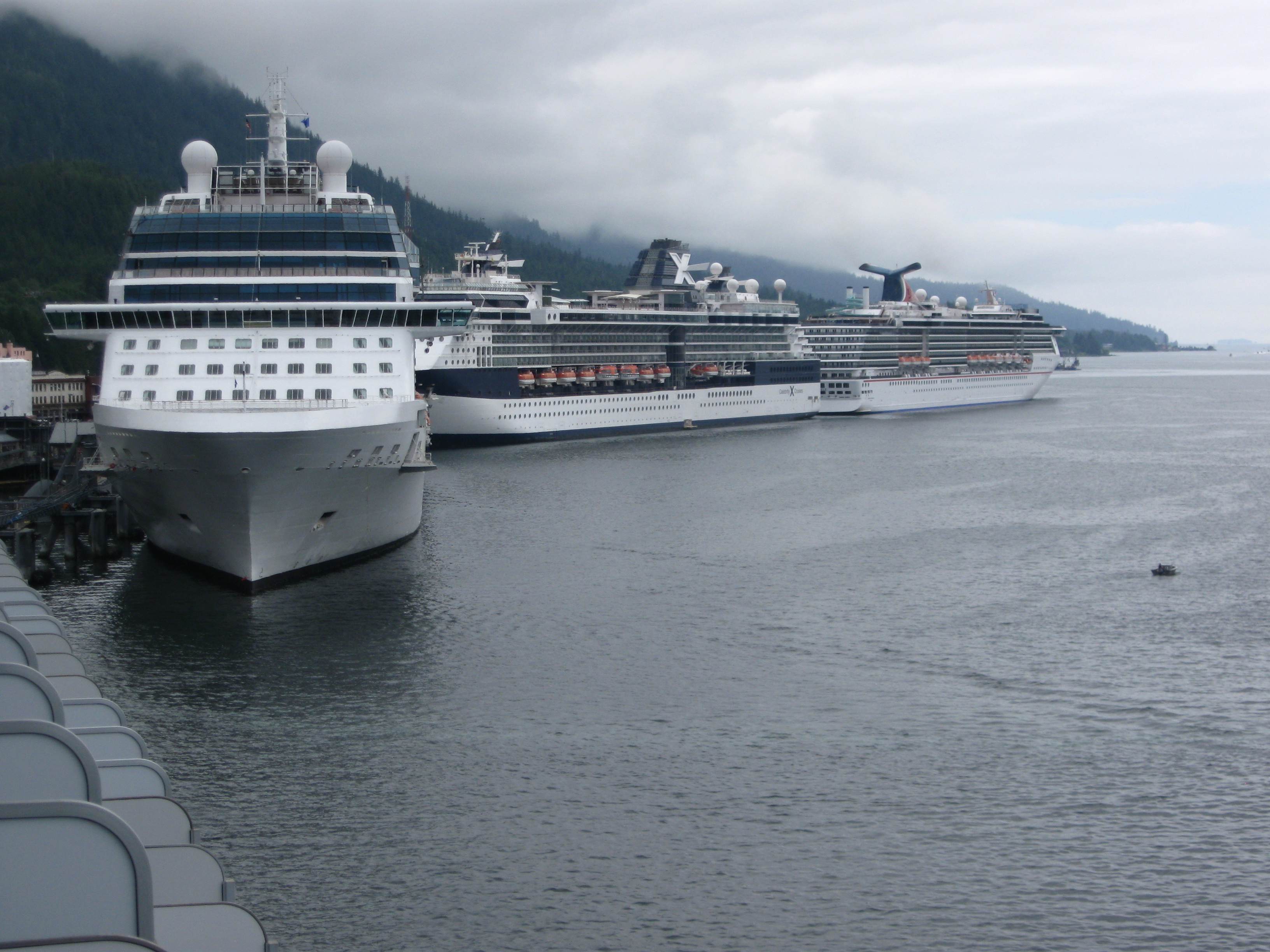
I am a shutterbug. While my husband is a skilled amateur photographer, at ease with his powerful digital SLR, fancy lenses and tripod, I am more at home with my little Canon Power Shot A590. Of course, there are some limitations on what you can shoot with a small, digital point-and-shoot camera, but I think most people would be surprised at what a compact camera like this can achieve.
If your goal is like mine, simply to get the best photos you can which will provide the best visual story of your cruise vacation - images you’d be proud to show your family and friends back home, then here are a few tips I’ve picked up over the years while on a variety of cruise and land vacations.
Know Your Camera.
I mention this because I never bothered to read the manual or play with the camera when I received it as a gift a few years ago. Primarily accustomed to just photographing my family, my cat and some scenery, I didn’t pay much attention to the other settings until just a few weeks ago, while on a photo safari excursion at Mendenhall Glacier in Alaska. We were hiking along a nature trail, and our photo instructor approached me and pointed out a couple of settings on my camera. For instance, you might think that by having had active kids and pets at home over the years, I would have known about the “kids and pets” setting – a perfect use for moving targets. Likewise, with the “macro” setting, I was able to learn how to photograph a pretty wildflower from just inches away.

Frame Your Shot.
Use the Rule of Thirds. Without getting too technical, imagine a tic-tac-toe board when setting up the shot. Your object should not be placed directly in the center square, but should fall at any one of the points where the lines crisscross, thereby placing it a third or two-thirds from the edge.

The same goes with horizon shots. Place the ocean in the bottom two thirds and the sky in the top third, or vice-versa, and not directly in the middle. Try to avoid the horizon appearing across the center of your photo. By placing objects off-center in your frame, and you’ll have a much more interesting photo.
Moving Objects Should Move Into the Picture – Not Away.
When setting up a seascape shot, remember the rule of thirds as it pertains to sky and ocean, and make sure any moving thing – a boat, for instance – is sailing into the scene you’re trying to capture, rather than away from it. This will draw the viewer’s eye from the moving object into the picture.
Add Some Perspective.
You’re standing at the railing of a cruise ship in front of a huge glacier and you say to yourself – wouldn’t this make an awesome photo. However, after taking the shot, you look at the digital image and all of a sudden it doesn’t really look that grand. Now take it again, but this time put a portion of the ship into the frame, or a group of people. The smallness of the person or object against a massive chunk of ice will show the viewer just how large that glacier really is.

Avoid “Head Sprouts”.
What is this, you ask? It’s the tree, tower, statue, sign or other object that seems to have “sprouted” from a person’s head in a photo. When photographing your brother in front of a landmark or landscape, take a moment to be sure that he doesn’t have a lighthouse or church steeple growing out of his head. Placing the people to the left or right of the target landmark will avoid this photography faux pas.
For the Best Shots, Shoot Early Morning or Late in the Day.
There are two times of day when the light is ideal for capturing outdoor landscapes – the hour around sunrise and again at sunset. The sun’s position early in the morning or later in the day allows for the sunlight to flow over the landscape in a way that intensifies the colors of nature and also creates spectacular shadows. Likewise, morning mist over a lake while the sun is still low in the sky will add mood and interest to a photo.


Avoid Using Flash.
Nothing kills a photo like automatic flash. It goes off at the most inopportune times. Case in point: While on the photo safari I mentioned earlier in this article, our group came across a black bear feasting on salmon in a grove of trees nearby. While being as quiet as possible so as to not draw the bear’s attention, we all tried to get a shot of him through the trees. Well, wouldn’t you know – my flash went off. I was momentarily afraid for my life when I thought he was going to charge out of the woods and have me for dessert! Fortunately, he didn’t budge.
Turn off your automatic flash - even for interior shots. When taking a photo of your cruise cabin or other indoor area on a cruise ship, rely on the room’s natural lighting. Place your camera on a stable surface or, if that’s not possible, hold the camera as steady as possible, using your elbows as leverage if need be, hold your breath and click. The results will be a softer image using the natural surrounding light, rather than a dark photo with little color and harsh light.

Avoid Shooting Photos from a Moving Car or Bus.
Guilty, as charged! Even though one out of a hundred photos I take from a tour vehicle will result in a decent photo, I still find myself doing this. Unless the window is open, and the bus you’re on is not moving, don’t bother. Trust me. You’ll only waste time later deleting a lot of fuzzy, useless images from your camera.
Have Fun.
There’s really no right or wrong way to take photographs while on a cruise, but the above suggestions may help you achieve good results. Don’t forget – mistakes can be tweaked with editing software. By cropping, straightening, adding contrast, color and definition, you can fine-tune your photos and make them look great.

Most importantly, have fun, experiment and take lots of photos!
By Janice Neves, CruiseCrazies Contributor
For more cruise news & articles go to http://www.cruisecra....com/index.html
Re-posted on CruiseCrazies.com - Cruise News, Articles, Forums, Packing List, Ship Tracker, and more












Recommended Comments
Join the conversation
You can post now and register later. If you have an account, sign in now to post with your account.